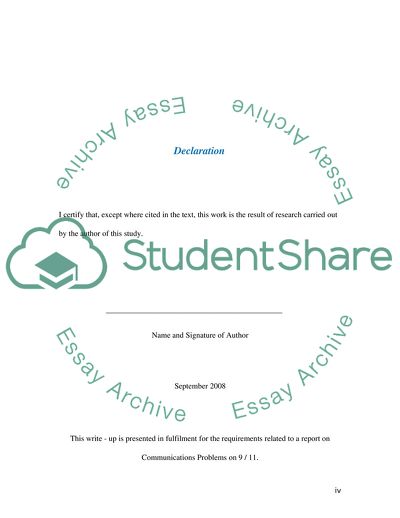Cite this document
(Communications Problems on 9/11 Coursework Example | Topics and Well Written Essays - 2500 words, n.d.)
Communications Problems on 9/11 Coursework Example | Topics and Well Written Essays - 2500 words. Retrieved from https://studentshare.org/social-science/1716286-case-study-communications-problems-on-911
Communications Problems on 9/11 Coursework Example | Topics and Well Written Essays - 2500 words. Retrieved from https://studentshare.org/social-science/1716286-case-study-communications-problems-on-911
(Communications Problems on 9/11 Coursework Example | Topics and Well Written Essays - 2500 Words)
Communications Problems on 9/11 Coursework Example | Topics and Well Written Essays - 2500 Words. https://studentshare.org/social-science/1716286-case-study-communications-problems-on-911.
Communications Problems on 9/11 Coursework Example | Topics and Well Written Essays - 2500 Words. https://studentshare.org/social-science/1716286-case-study-communications-problems-on-911.
“Communications Problems on 9/11 Coursework Example | Topics and Well Written Essays - 2500 Words”. https://studentshare.org/social-science/1716286-case-study-communications-problems-on-911.


